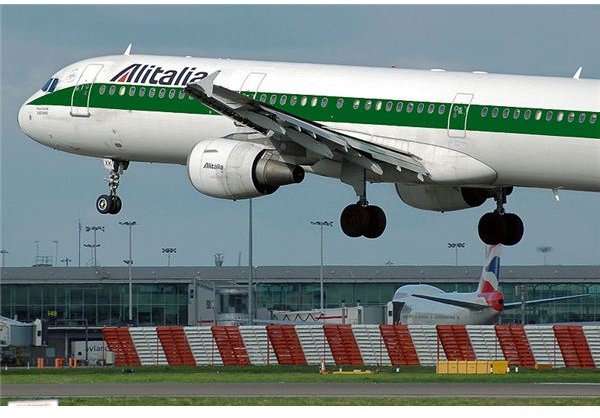What is Taught in a Flight School Ground Course on Landing
Importance of Flight School Ground Course on Landing
Landing is by far the most demanding as well as dangerous phase of flight as the aircraft comes back from the freedom of three dimensional motion in the air to touch down on firm ground. Due to the various aerodynamic reasons involved, the landing in all fixed wing aircraft has to be performed at high speeds which complicate the matter further. The chances of an accident taking place are highest during this phase and hence require skilful execution by the pilot in order to safely and firmly return the aircraft back to earth. Correct landing requires clear understanding of the various parameters like speed, rate of descent and glide path and accurate judgement of the perspective of the glide path till landing.
Judging the Perspective
Accurate judgement of the perspective of the final approach path of the aircraft from the top of the final glide to the touchdown point on the runway is the key to smooth landings every time. This perspective refers to the angle at which the aircraft is coming down towards the ground. If the height is too much then the perspective becomes steep and conversely when the aircraft is low, the perspective becomes shallow. Judging the correct perspective right from the beginning allows the pilot to take corrective actions in time. This angle depends on the actual height of the aircraft and its physical distance from the touchdown point. Height remaining constant, if the distance from touchdown point increases, then the perspective becomes shallow.
Controlling the Parameters
Any flight school ground course on landing aims at familiarizing the trainee pilots with the basic parameters that can vary in an approach to touchdown and the means to control them as per the landing requirement. The primary parameters involved in an approach to landing are speed and rate of descent of the aircraft. The combined effect of these two parameters determines the angle at which the aircraft comes down and the point on the runway where it heads towards.
The speed of the aircraft is controlled by the attitude of the aircraft. Changing the attitude changes the flight path causing a change in the subsequent speed of the aircraft if the throttle setting is maintained constant. The rate of descent however, is influenced by the power setting of the aircraft. Increasing the power implies a reduction in the rate of descent while reducing throttle results in a faster descent.
In case of a steeper than required perspective, the correction can be made by reducing power which will induce a faster descent until the aircraft intercepts the required glide slope once again. Correction for shallow perspective is done with an increase in power.
If the aircraft is heading towards a point that is short of the intended point on the runway, the approach is said to be under shooting and in case it is going towards a point ahead of the intended point on the runway, the approach is termed as overshooting. In such situations variation in the attitude is made to reach the desired point on the runway for touchdown. The corrections in attitude require suitable changes in the power settings which must be effected at the earliest.
The Wind Factor
Winds play an important role in deciding the direction and type of approach for landing. It is always preferable to land into the winds. Head winds help the pilot in controlling the parameters better and let the landing approach be done at lower speeds. On the contrary tail winds give a higher ground speed requiring the throttle to be reduced which is a dangerous situation. During strong head winds, the approach speed needs to be increased with power to ensure that the actual ground closure rate towards the runway is as required.
Flare and Touchdown
Flare or roundout is the process of rounding the approach path to ensure a smooth transition from the approach attitude of the aircraft to the touchdown attitude. This manoeuvre helps reduce the rate of descent and cushions the touchdown of the aircraft on ground. The height at which the flare is supposed to be done depends upon the type of aircraft and is usually done with visual references. The aircraft floats in the air for some time before gently settling on the runway surface.
Landing Roll and Braking
This is the last lesson in the flight school ground course on landing. After the touchdown is effected safely the aircraft has to be maintained on the centreline of the runway using rudders. After the speeds drop to a controllable figure, both the brakes must be applied simultaneously with equal pressure to gradually bring the aircraft to halt. Unequal or jerky brake application can lead to the aircraft going off the centreline.
Ensuring Safety During landing
There are a few essential precautions that must be adhered to during the landing phase to avoid getting the aircraft into unsafe regimes. The perspective of the approach needs to be judged right from the baseleg turn so as to be settled early on the final leg. Corrections of speed and rate of descent must be combined to ensure that the effect on the other parameter is also countered simultaneously. The corrections on short finals must be small and continuous rather than large variations. Lastly the pilot should never hesitate in going round in case of the approach for landing becomes uncontrollable at any stage.
References
- Airplane training handbook, “Approaches and Landings”, http://www.faa.gov/library/manuals/aircraft/airplane_handbook/media/faa-h-8083-3a-4of7.pdf
- Image: Airbus Landing by Arpingstone under public domain http://en.wikipedia.org/wiki/File:Alitalia.a321-100.i-bixk.arp.jpg
